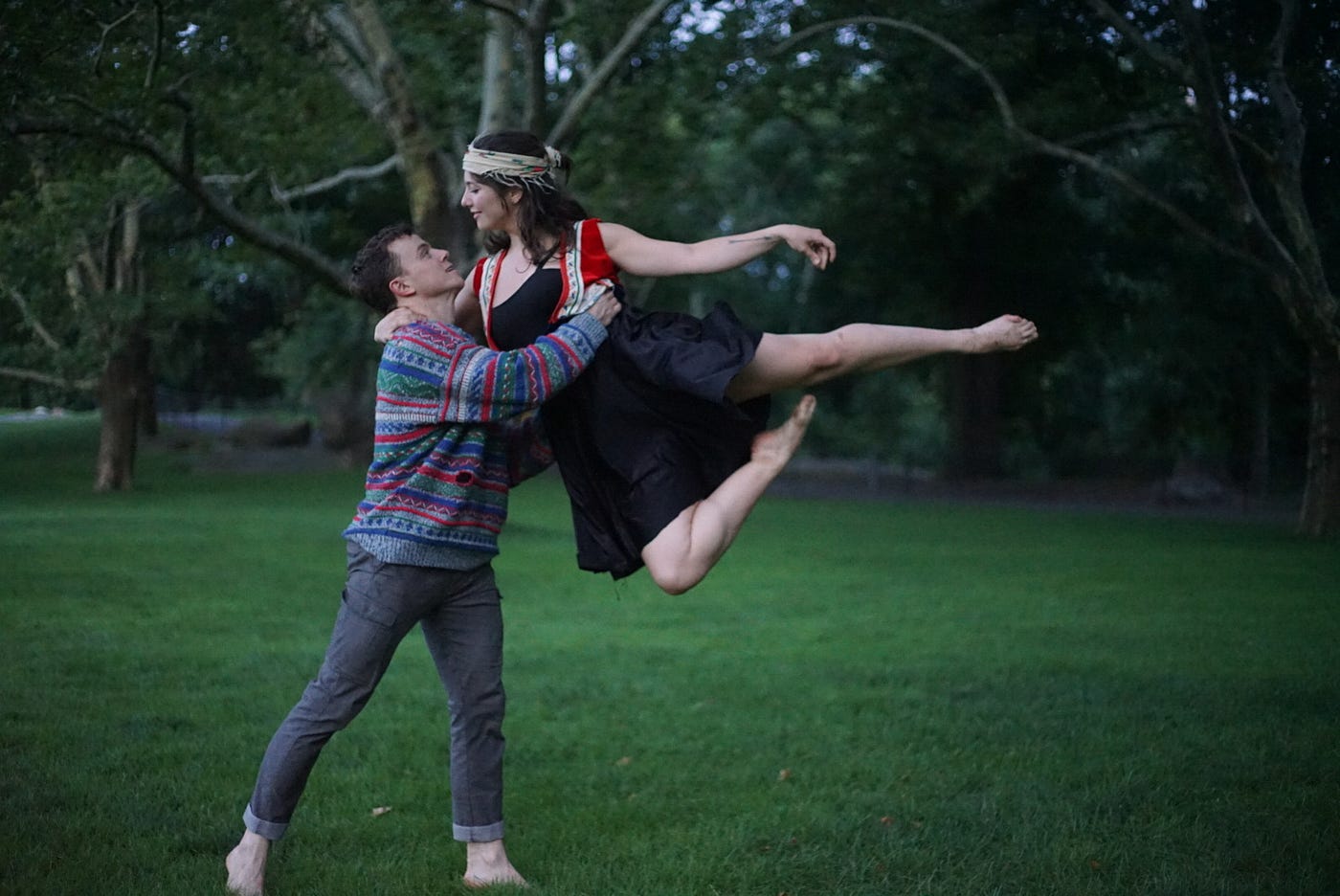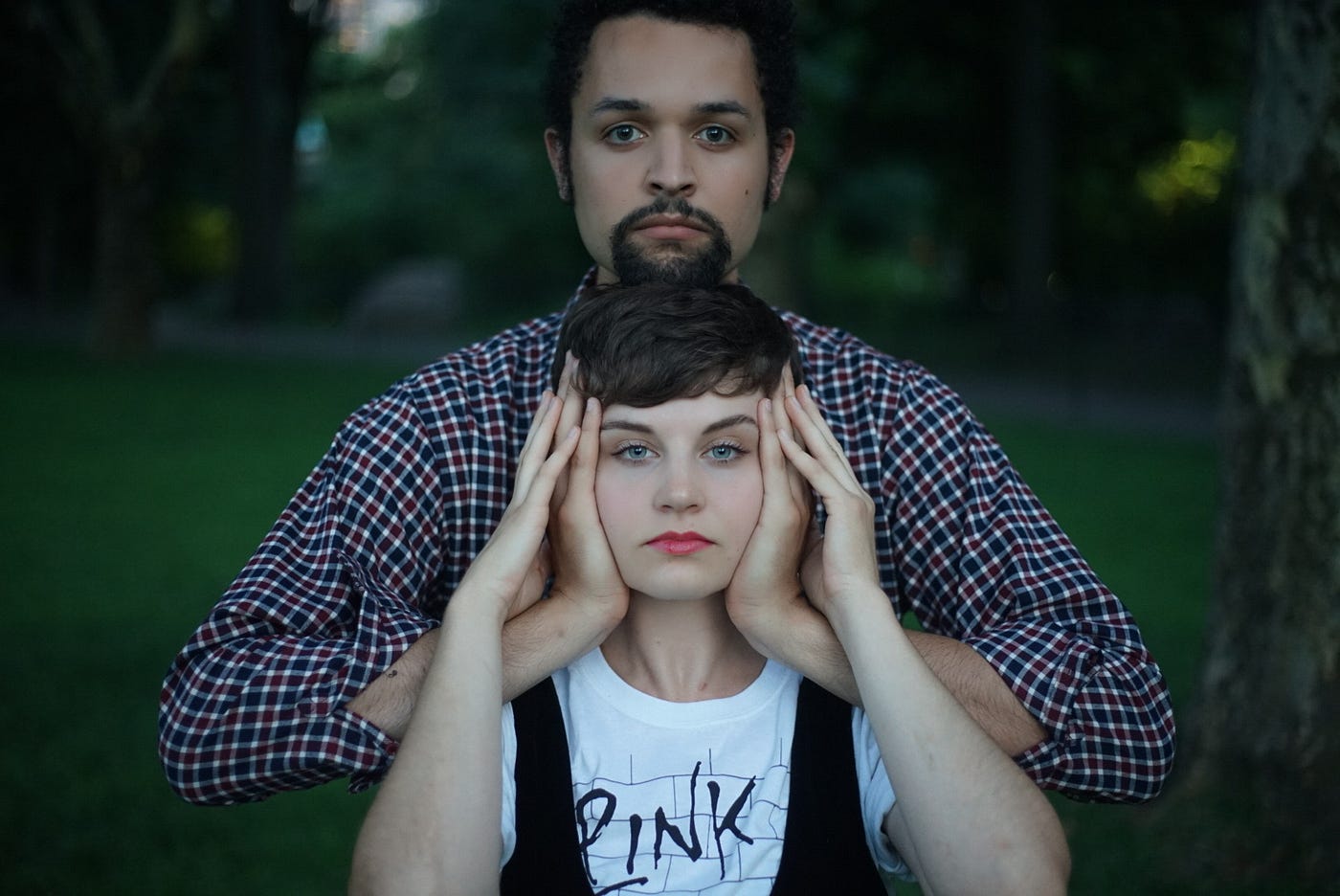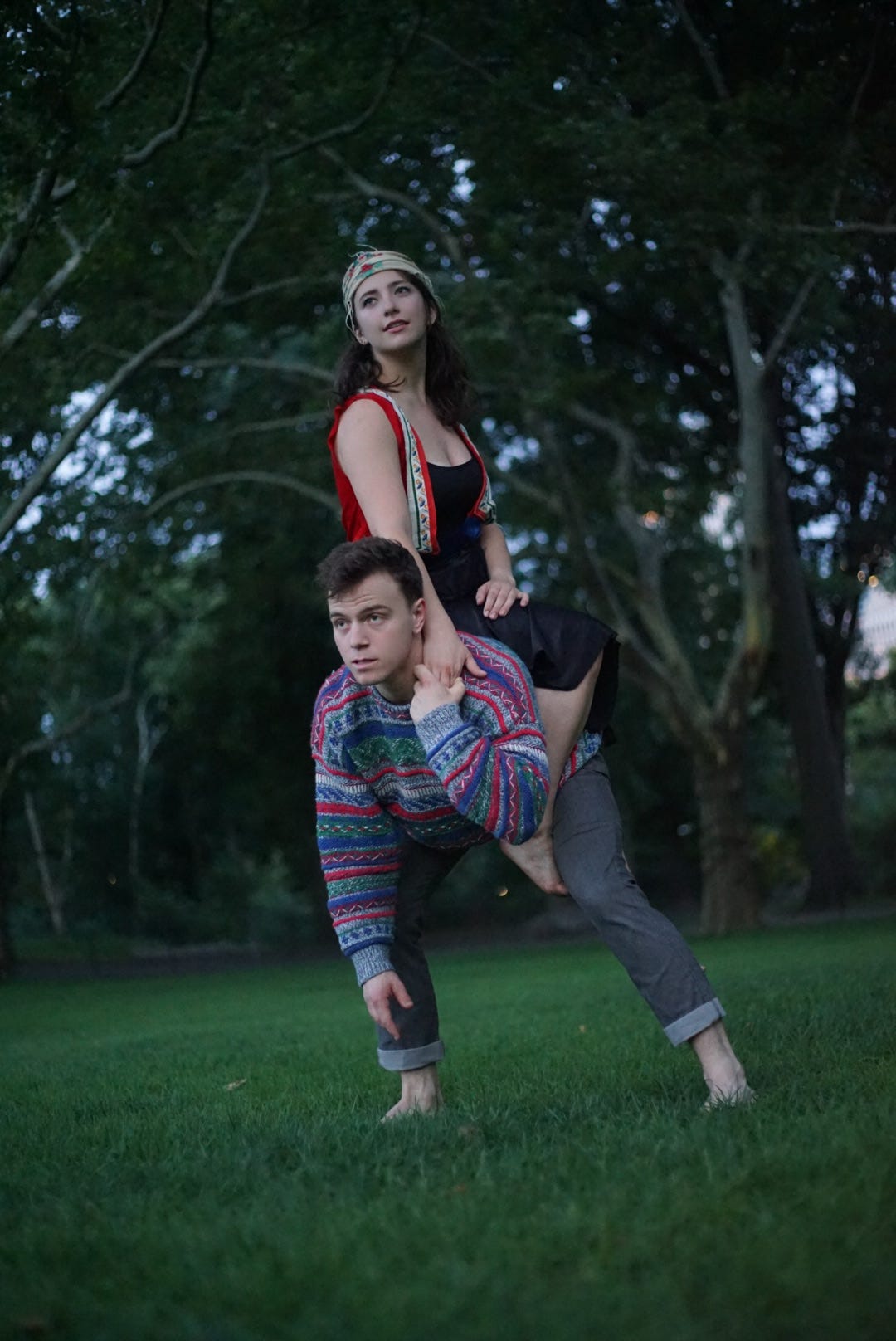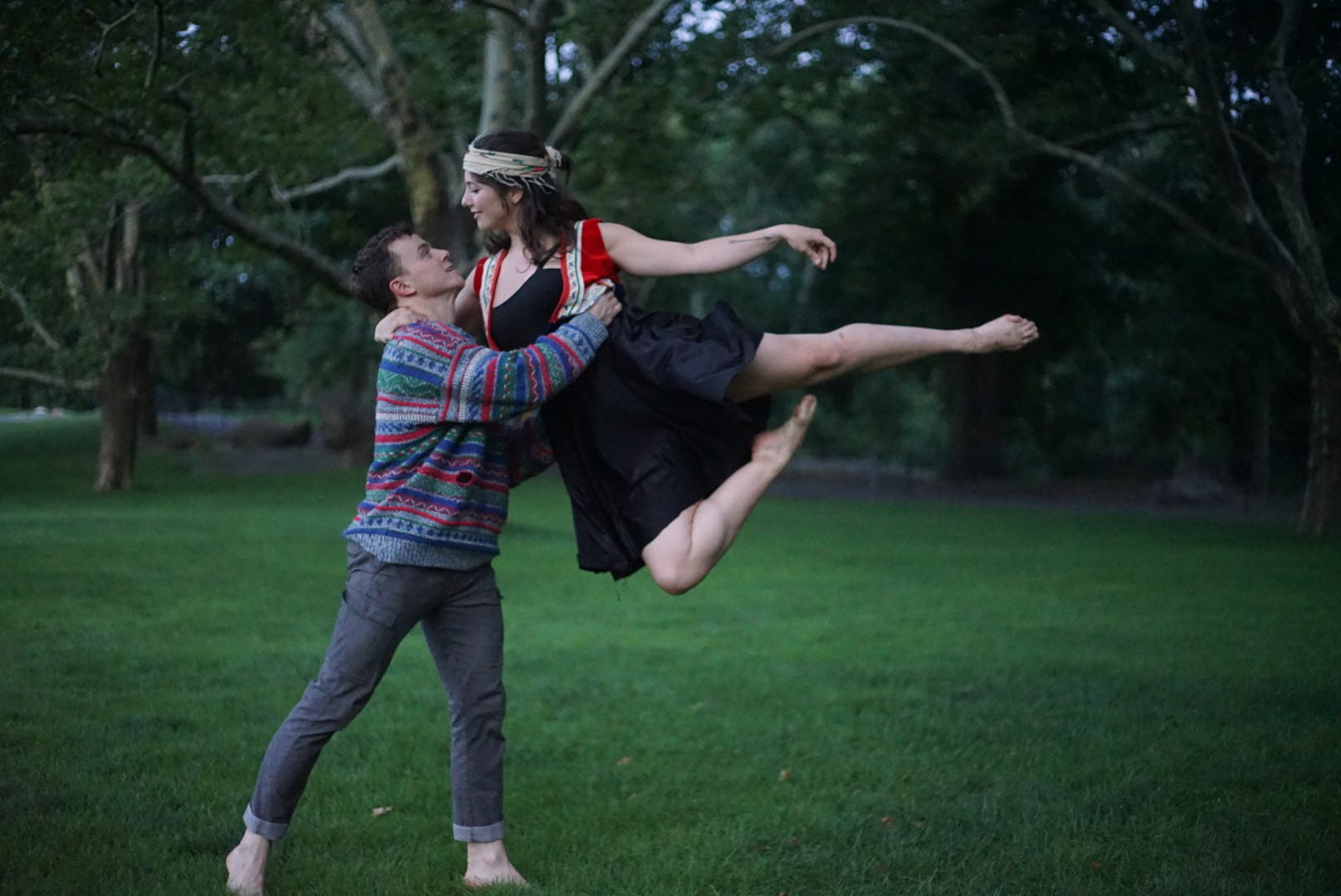
Join the tribe for this modern folk tale
Folk tales have long been an inspiration for theatre creatives. Taking well known fables and giving them a new interpretation has proved to be a successful model in the past. Not so common, however, is for new “folk tales” to be written and presented. Writer and director Kierna Conner has decided to do just that with The Great Brown Bear, a modern allegorical tale, which goes something like this:
Once upon a time, there was a princess who longed to be married. One day, a bear came to her, and proclaimed his undying love for her. She sought the King’s approval and they were wed, but this was only the beginning of their story….
We are then introduced to two new characters of a different era, although it’s hard to say exactly which time frame they’re in. “She” is a school teacher, with a bow in her hair, desperately seeking her father’s love and approval. “He” has returned to town, with his brown leather jacket, and has immediately fallen for the girl he meets in church (my guess is they’re in the 1950’s). We follow their love story from this fateful first meeting, through to their elopement, and into the mundanity of married life. It becomes clear that the folk tale is serving as an allegory for this couple, or is it that the real life story helped to create the folk tale? Who the “bear” and the “princess” become in this new setting is a fascinating tale.

The story is told through a flexible ensemble cast who takes on multiple roles over the course of the show. Each character is signified by a particular item of clothing or costuming. Scenes from the folk tale appear as flashbacks, but each provide foreshadowing for what is about to befall our real life couple.
Through the ensemble cast, the couple morph and change throughout the evening, and are portrayed differently each time. Sometimes we are in a fairy tale presentation, with calm, loving and well crafted lyrical phrases spoken by the couple. Other times, we appear to be looking at a very real couple in front of us, with harsh dialogue and cutting words. This mishmash of styles gives the story an interesting extra layer, as it gives the audience pause to consider which the ‘real’ story is in this presentation.
Most of the audience viewing this story are sat on chairs around the edge of a dance studio in the West Village, while 5 or 6 brave individuals have opted to sit on the floor, close to the action. Coming to this production described as “immersive,” I knew the floor would be the ideal place to be to take advantage of any audience interaction. Unfortunately, this is where the production fell down for me.
Get Edward Mylechreest’s stories in your inbox
Join Medium for free to get updates from this writer.
SubscribeSubscribe
During an early scene, the audience are handed song sheets to join in with the choir in singing “Amazing Grace.” Later, those of us on the floor toss hand-crafted “leaves” made of coarse material up in the air, as the couple prepare to be married. The deepest sense of interactivity came when the “bear” and the “princess” approached me and my seated partner, and gently guided us in a moment of hand choreography. But this was the ultimate extent of the interactivity. These all too brief moments of audience interaction do not truly make this an interactive piece, let alone an immersive one. The audience is very much a passive audience to the narrative, with no agency or effect on the story, and other than being gathered around to listen to a folk tale, it is hard to discern what the audience’s role is.

The seeds of a strong immersive piece are definitely there, and so I hope the team will take this beautiful piece and continue to develop it. The Great Brown Bear could really come to life In an unorthodox venue, perhaps outside in one of city’s great parks (the promo pictures for The Great Brown Bear just scream of great possibility!). Even in a simple black box theater, there could be room for more creativity of set, which here was left much to the audience’s imagination but with the distractions of a regular dance studio. I would love to be invited into the scene, actually into an apartment, perhaps to be privy to the tense conversations that take place at the dining table.
There is ample space to be bold with the audience. Why not give an audience member the brown jacket and let them become the bear, or to take the role of the princess by wearing the headband. Invite them to be characters and gently direct them as the narrative needs. Immersive audiences are just waiting to be given the chance to be fully immersed in the story, what better way than this?
I walked out of The Great Brown Bear in a strange state of mind. It really was a beautiful piece, filled with imaginative writing, clever dialogue, and a lovely feel. There were some really moving moments of impassioned poetry as the story progressed. The costuming, again by Kierna Conner, was a charming folk-inspired mish-mash, like seeing the Von Trapp children after Julie Andrews gets her hands on the curtains in The Sound of Music. The choreography, which would appear at moments of high tension or drama, helped to create this atmosphere of a fairytale land, and then a fairytale gone wrong.
The Great Brown Bear is clearly a passion project, which has had a whole load of love poured into it. In its current state, it is akin to being sat with your tribe around a campfire to be told an old story. Next time, and I do hope there is a next time, I want to be in the story.
Find out more about The Great Brown Bear on their web site.
NoPro is a labor of love made possible by:

…and our generous Patreon backers: join them today!
In addition to the No Proscenium web site, our podcast, and our newsletters, you can find NoPro on Twitter, Facebook, YouTube, Instagram, in the Facebook community Everything Immersive, and on our Slack forum.




















Discussion